Mat Dowsett goes off the beaten track whilst holidaying in the Spanish Pyrenees and discovers an extensive bouldering area, tucked away under the peak of the Peña Foratata.
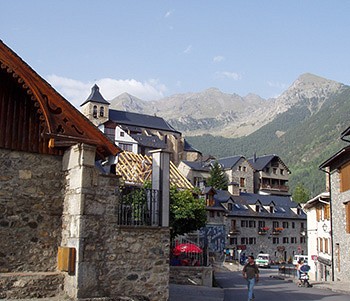
The Spanish villages of Formigal and Sallent de Gallego are well known within the skiing fraternity, even the Spanish Royal Family like to play there, but in the summer they sit dormant high in the midi Pyrenees, close to the French border, under the shadows of the impressive Pic Du Midi D'Ossau and especially the spiked Peña Foratata.
This area of Spain has not been widely developed for climbing, although the Pic Du Midi is very famous and has numerous routes, the rest of the area is quite sparsly developed. We found that there is a good range of bolted routes above Panticosa (very long and very bold), and some smaller climbs for sport-climbingh at Escarilla (very artificial but good practice), but the rest is largely under-developed. This is a great shame, as the area provides a fine base for summer climbing and is not too far to travel from the airports of Zaragoza, Bilbao or Biarritz.
In 2003 Liz Hay and I quite literally stumbled upon the expansive area of boulders sitting below the Peña Foratata. We had been trying to get up to the Foratata to do a longer climb but had been defeated by the heat and the masses of flies as we made our way up through the meadows – we had missed the path and gone the wrong way, a real error. In order to escape both we diverted back towards the main path and found the boulders. Serendipity. We could see at once that there was a wide range of possible routes; both bouldering and traditional. The rock is a pale, grey limestone, and thanks to the extreme seasonal temperatures suffers a lot of weathering and can be very loose in places. However, where it is sound the routes are solid and varied, with some blank friction slabs, fine crack-lines and some more unusual flake routes. We felt as though we had walked into a giant sweetshop, these boulders didn't appear in any of the guides we had read.
On that first occasion we climbed a small number of the obvious lines before heading back for a beer, but we were determined to look into the area further due the massive possibilities for routes. Our investigations found that there were a small number of listed routes on the Foratata itself, but nothing for the boulders.
A year on and we were back in Sallent de Gallego, only this time armed with a lot of paper and pencils, all our climbing gear and the determination to get as many of the routes knocked off within one week as possible. As we were going to be producing the skeleton of a small, local guide we knew we had to do much more than climb and record the routes. There was the mapping, layouts and diagrams to sort out, as well as the logistics, it was quite a project and not long to do it in. The path up to the area took around 40 minutes, generally a gentle stroll, but with a rather steep middle section. This could be a bit of a burden when carrying all that rope and metalwork, but we believed it would be worth it.
Over the coming days we worked our way across the area, seeking out the best and obvious lines, and trying to apply a fair spread of routes across the boulders. We had our own upper limit of grades this was due totally to our own limitations. I regularly lead VS and sometimes beyond that, Liz has yet to lead at Severe. This means that we were able to concentrate heavily on the lower grade routes, and that has left a whole host of other bouldering routes and more serious climbs to be tackled by better climbers. Overall the area now has around 50 routes, but theoretically this could more than double with the amount of bare rock still to be touched, especially on some of the sterner faces in the Jurassic Park area. We have not claimed all the routes as first ascents simply because many of them have surely been climbed before, especially a number of the easier ones close to the path, and the more obvious lines. No doubt there are other climbers who have tackled some of these routes, and we are happy to accept their route names and first ascents if we ever find the information, but for now we have simply put together as good a document as we can.
The Climbing
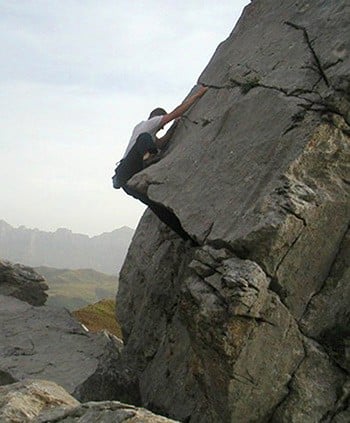
The boulders are scattered over a wide area on both sides of the path, they are easily reached, and thanks to some very distinctively shaped features, the route finding is generally very easy. Some areas were easier to develop than others, and we were most surprised by the small number of routes on The Giant, which looked from a distance to be a very obvious place to start, but close up was found to be broken and loose.
At the very top of the area there is The Cluster, which is small and compact. Routes here tend to be short and easy, though there are a few steep gems, and still scope for a variety of bouldering routes and eliminates. This area is the easiest to climb on and around, with little scattered rock below the climbs and easy ways down off every route. Prang potential is kept low by the grassy landings and some of the steeper faces with their short bouldering routes feel a lot safer than many of the other parts of the boulders. Via Izquierda (4c), Via Diagonale (4b) and Via Derecha (4a) provide a triumvirate of entertaining steep routes. Further over Abrazos (HS 4a) is entertaining, if a little perplexing; the clue is in the name, if your Spanish is up to it.
Below this there is The Giant, a very obvious large block which as mentioned earlier, actually has less routes than might be imagined. However, these routes give good practice for the VDiff leader, especially The Giant's Step (VDiff) and Giant's Staircase (HVDiff) which will test you, as they require some inventive ropework and are not very well protected. Being the longest routes among the boulders this provides a return to genuine roped climbing, unless you are feeling particularly bold.
Around the back of The Giant there is a huge waved overhang that may offer some potential for those prepared to drag a bouldering mat all the way up from the car. The front face is steeper, thin and frighteningly bold, one glance shows that protection is very hard to come by. That sounds like a challenge for someone to take on...
Further down from The Giant is the area known as Jurassic Park – many smaller scattered blocks and boulders that have been given the names of dinosaurs for identification. Here there are a lot of friction climbs – where the limestone is incredibly smooth, but broken by the occasional weathered hole. Prang potential remains varied, though a bouldering mat would eliminate this on a large number of the climbs. Particularly worthwhile are the friction routes on Tyrannosaurus and The Raptor – good little test pieces without too serious a landing. The faint silver ripples of limestone provide nerve-racking but solid grip while the hands grasp for virtually nothing; weathered pockets tend to appear just in time or perhaps they are just out of reach. Faith in your feet will serve you well here, and the true sportsmen will actually leave the bouldering mat behind.
For the VDiff leader, the three routes on the elevated slab of Triceratops will provide some good fun. Not The Great Orme (HVD 4a) is the most exposed and precarious of the routes on this unique isolated slab. Elsewhere The Trilobite is an under-developed block with great potential for new routes far beyond the short-lived gem that is 99 Flake (VDiff).
Across the path and up towards the Foratata is the Pyramid area – so named because of one particularly distinctive boulder. This area has probably the finest concentration of routes in the area, and is a good place to spend an afternoon. Particularly worthwhile is Zorro Block – with some nice routes on the front face (The Mark of Zorro, HVD) and a steep, fist-wrenching crack round the back (Marmalade, VS 4c), one of the most highly recommended routes in the whole area. The Zorro Block has the odd steeper route waiting to be climbed, especially close to Marmalade, while the front face could offer a few friction eliminates, and one unprotected directissima. Better still, Zorro Block has one of the easiest walk-offs possible.
Nearby is the Marmot – an unusually shelved block that is not high but offers some good sport (The Marmot's Hump, 4c). In fact the area is littered with a variety of boulders. This can be quite uncomfortable underfoot, but there is still scope for a lot of new sport.
Overall the setting is magnificent and well worth the walk up through the meadows. Not only do you have the imposing walls of the Foratata above you, but the atmosphere is built by the screeching of Marmots, the solitude and the views across the Valle de Tena to higher peaks. This is a fine playground, a good location to do a whole series of shorter climbs, then it's down to Sallent to enjoy a beer or two in one of the many bars in the town square.
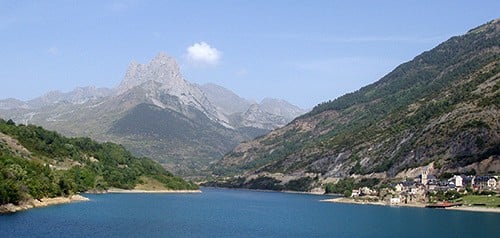
Logistics
The Foratata boulders lie on the slopes of the impressive Peña Foratata above the ski resort of Formigal in the Spanish Pyrenees. Mat Dowsett and Liz Hay stumbled on the area in 2003, but with no recorded climbs or guidebooks, they returned in 2004 to put that right.
Spread over a wide area these grey limestone blocks provide a range of entertaining lower grade climbs. This is predominantly a bouldering area, though with some routes up to 12m high, traditional climbing is also possible. Currently the area boasts over 50 routes, none of which are harder than VS 4c, which makes this an excellent area for lower grade climbers looking for a concentration of easier routes or for higher grade climbers to take on the challenge of tackling the many unclimbed routes in the area.
The rock is good in general but can be loose in places, caused by seasonal extremes.
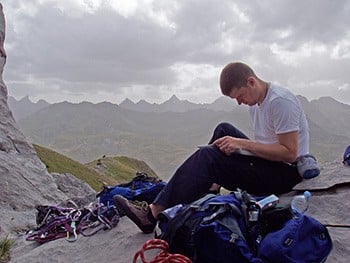
Guidebook
There is now a MiniGUIDE available in PDF format from the Rockfax web site.
Best Conditions
Peña Foratata sits high in the Spanish Pyrenees in an area better known for skiing. Winter months should be avoided with the best times being May to October. The boulders are constantly exposed to the sun and in the summer this can make the temperatures very oppressive.
Gear
This is mainly a bouldering area but there are also many traditional routes. Protection is often sparse but a normal rack of wires and Friends should suffice. We do not encourage bolting and currently there are no bolts on the Foratata boulders.
Tourist Information
There is a small Tourist Information Office in Sallent de Gallego – Tel 0034 974 488 005 (Summer only) or the Tourist Information Office in Formigal – Tel 0034 974 490 000 which is open all year.
Accommodation
There is a wide range of accommodation available in Formigal and Sallent de Gallego. This varies from camping, through to hostels, apartments and hotels. All are reasonably priced and in summer (off season), are readily available, except during fiestas. Check with the Tourist Information Offices. We recommend Sallent de Gallego as it has the widest variety.
Food and Drink
Formigal, and especially Sallent de Gallego, have a wide variety of bars and restaurants. We especially recommend Pizzallent in Sallent which offers a good range of inexpensive Pizza, Burgers and traditional Spanish food. Sallent has a Spar supermarket off the main square.
Local Climbing Gear Shops
Formigal has an InterSport with limited gear. The nearest alternatives are InterSport and Actividas de Montaña in the centre of Panticosa, approximately 12km from Sallent de Gallego.
New Routes
Please email me with any new route claims or other information relating to the area.
[advert()]


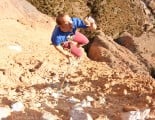
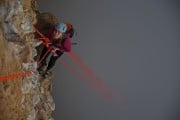
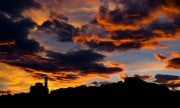
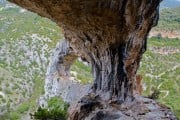

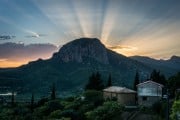
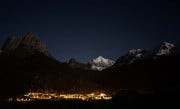

Comments